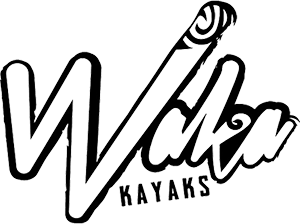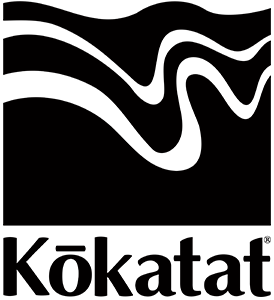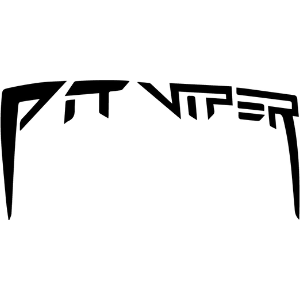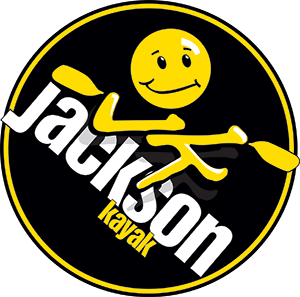Presented by
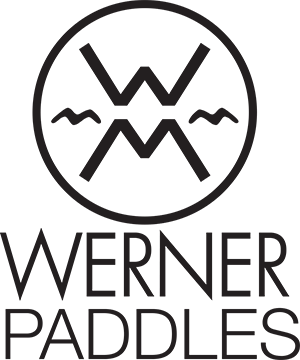
As kayakers we love to share our passion through media, because in many cases that is the only way. Shout out to the boys and girls packing their camera gear around. This is the best Short Film in the World of Kayaking.
[ Full Interviews with Top 3 Short Film Finalists Featured Below ]
• WINNER •
Zambezi 2021
SEND
Whitewater Awards: What inspired you guys to make this video?
Kalob Grady: The Zambezi is a special river, and with the pending hydroelectric dam project moving along, we wanted to showcase the river in hopes to inspire as many kayakers as possible to visit this river before it’s too late.
Bren Orton: Talking to Benny Marr. The films we watched as kids of the Zambezi meant so much to us and we really wanted to create an edit that emulated them. Fast paced, High action, Punk Rock..
WA: Why this river showcased?
KG: As a team, a major goal of SEND has always been to combine professional level kayaking with a professional level of cinematography. As a team, we’ve now filmed throughout 5 continents and it was time to pursue higher water levels on the Zambezi, and display the true power of this incredible river.
WA: Who is paddling / filming?
BO: Dane Jackson, Kalob Grady, Benny Marr, Andi Brunner, Isaac Hull.
WA: Who mostly films? Who flies the drone?
BO: We do a pretty good job of sharing the filming between us. Dane is undoubtedly the best drone pilot though and Kalob and Benny take a bloody nice photo. I am happiest on the bank with the GH5 or trying to do some follow cam stuff with the GoPro.
KG: A special aspect of SEND is that we all pride ourselves on the ability to film and fly at a high level. This project specifically, a majority of the handheld filming was captured by Bren, and Kalob and Dane split time with the Drone in the air. Bren Orton was solely responsible for the editing and bringing this all-time edit to life.
WA: You guys were there longer and later than normal.. were you wanting to get higher water or waiting for certain features to come in? Had you run or seen the river this high before?
KG: Personally, we haven’t seen the Zambezi this high before, but it’s been a goal forever to see the #11 wave, and the high water lines at #9. Inspired by the early 2000’s on the Zambezi, with Scott Lindgren, Dale Jardin, Steve Fisher, etc; we all wanted to witness the higher flows within the Batoka Gorge.
WA: Was high water better or do you prefer the river lower?
KG: The river rose 7-8 vertical feet in the gorge during our timeframe. And honestly, we didn’t see a drastic change in most of the rapids. The chokepoints drastically, and some wave trains evolved into more dynamic beasts, but for the most part, outside of #11 and #9, the river kept its same enjoyable nature. High or low, the Zambezi stands as one of the best days of kayaking in the World!
BO: High water was all time and some magic things happen at those flows but for sessioning the river or for first timers I think lower water gives much more consistent good pieces of water, that are still pretty fackn big.
WA: On those massive waves it looked like you guys were mostly in half slicy boats instead of traditional playboats.. were those the boats of choice? Stoked to have brought playboats for the barreling #11 wave though?
KG: With waves of that size, the weight of the kayaks becomes non-relevant, and the extra length and speed become desirable in the half-slice kayaks. The fact that the boys were throwing tricks on these waves in any kayaks here was incredible. Want to see how big they truly are? You will have to visit for yourself.
BO: Making it out to the wave and catching it was seldom successful. The half slices definitely allowed more consistent surfs on that one monster wave that sprung up at rapid 9. The barrel wave the freestyle kayaks where for sure a better option but I think we all agree that we didn’t catch a prime barreling wave.
WA: What is your favorite part of paddling the Zam? Do the crocs scare you?! What is your favorite part of life styling down there?
KG: Everything, everything about the Zam is special. #9 is majestic rapid and has to be the biggest, pure joy rapid in the World. The lifestyle pre and post river, the climate, the fact the river is good every day; there are so many reasons to love the Zam lifestyle, to try and describe in words would be an injustice.
BO: So many good rapids on one river with such easy logistics. I can feel myself getting stronger and better at kayaking every time I hike out of the gorge after a long day of shredding with my friends. I genuinely think it’s one of the best places in the world to enjoy the sport and get better at it. Crocodiles don’t scare me, I’m from Warrington.
WA: What kayaking film in the past has inspired you to make short films?
KG: Speaking for the whole crew on this one, I believe we felt there was a void in the sport for high-quality short films. With Rush focusing on feature-length films, and EG/Substantial crushing the longer LVM style edits online – we wanted to step into the 4-7 minute zone and combine the highest level of kayaking on the planet, with cinematic filming and A+ editing.
BO: Too many to mention, much love to everyone that has created videos or films for me to watch and get stoked about the sport on. I would say that River Roots / Rush Sturges films always motivated me to shoot and edit my own stuff. I hope one day to make a full length kayaking film..
WA: Where is a place we can see more of your work?!
KG: The SEND youtube channel is home to all of our best work, From Chile to Norway, Hawaii to India – It’s all there: SEND Youtube Channel.
• RUNNER UP •
Pakidaille
Nouria Newman
Whitewater Awards: Heard this drop and river was close to where you live? How close? Are there sections of this river that you run regularly or have you just run this gnarly drop?
Nouria Newman: This drop is less than a kilometer from my dad’s house in the canyon between Val d’Isère and the Chevril lake. I only started running the whole section regularly last spring. It’s beautiful whitewater but it’s also pretty gnarly with a lot of metal bars from the road construction and sharp rocks.
WA: This drop was a first descent correct?! Had you scouted it in the past? What made you think it was runnable now?
NN: I had scouted the whole gorge and this rapid several time but I didn’t think it was runnable. During lockdown we were only allowed to go outside one hour a day, less than a kilometer from your house so I spent a lot of time looking at it, with more water it looked better and I knew the upper section was good to go but I still didn’t think that the big drop was runnable. We kept looking at it because it’s a cool looking rapid a d it’s close to a climbing spot and eventually as the lake came up it flooded the bottom chaos of rocks that made it unrunnable. There was a line and perfect levels in both the lake and the river.
WA: Was that your Dad in the boat at the bottom running safety? Was he scared?!
NN: The rapid was only going to be perfect for a short window so at the last minute I gathered a small team for safety and logistics. Martin and my dad were on safety. I asked Martin to cover the middle of the rapid and my dad to be in his boat at the bottom. I made sure he paddled up from the bottom and that he didn’t see the rapid before I ran it. Then we got out and looked at it afterwards.
WA: Who was helping film? Do you do the editing?
NN: On shore I had two friends Boris Langenstein and Tiphaine Duperier. They filmed and took photos but there were here to help with any sort of rope work or rescue if needed. They are both badass mountaineers and after helping me they headed to Chamonix and completed a really cool steep skiing descent on La Blanche de Peuterey the very next day. It was awesome that we all got our big descents done. I did the editing with some help from Tiphaine.
WA: Saw you ran it in a Steeze. Was this your boat of choice or would you prefer a different boat?
NN: With COVID I had to leave the U.S. in a rush, and I left my Stout in Squamish with Liam and Shred. The Steeze was my only option but the puffy Steeze is plenty big for me and I really like it has a creek boat.
WA: Do you think you’d run this drop again?
NN: My dad says I don’t have to ! I ran it again later last spring but the bottom was flooded so it was definitely not as hard to link the moves. Maybe if flows align again I will but not too sure because it’s a scary one and might be a one time.
WA: What is your favorite river near your home to paddle?
NN: I guess that the Pakidaille gorge is my new favorite. With water the top section is really good whitewater. It’s stacked and it’s only 5min from my house. It’s a bit too short though. I do have my eyes on two other rivers with potential though.
WA: What kayaking film in the past has inspired you to make short films?
NN: I grew up watching David Arnaud’s movies Froggies, In Flux. Then any YGP, Rush’s movies, Tribe edits, Bomb Flows and Substantial Media House. But these days I’m not so much into kayak porn anymore and I struggle with most vlogs. Since I went back to film school, I am definitely more into story telling and direct cinema. Working with David Arnaud is a blessing in that way. And my absolute favorite action sport movie is Jerome Tanon’s The Eternal Beauty of Snowboarding.
WA: Any other short films in the works or will we just have to wait and see?
NN: We just released a short film from our trip in Iceland on RedBull Channels and we are working on a new project that should come out in two-three months.
WA: Where is a place we can see more of your work?!
NN: On the river! I am a bit lazy on the filming because it involves too much time in front of the computer. Otherwise good films on RedBull channels and marginal edits on my YouTube.
• THIRD PLACE •
Uno y Ninguna Más
Mikel Sarasola
Whitewater Awards: Really cool theme about preserving rivers for a healthy planet and for ours and future generations to get out amongst it to be fully alive. What inspired you to make this video?
Mikel Sarasola: I am a whitewater kayaker because I love the adrenaline and the feeling of flowing down a river, but this sport ended up being much more than just a thing for having fun. Kayaking has shown me the world, gave me a reason for traveling and to go to places that I would hardly go if it wasn’t for kayaking. But when I look back the least thing I normally remember are the rapids. I can remember the landscapes, the people, the cultures, nature, those campsites in the riverbank, the times with friends or all the stories around the river. Kayaking has given me the opportunity to look at this planet from another perspective, and it is this view that I like to share in my films. Because kayaking is much more than just paddling down the river.
WA: In your opinion / travels what are the top 5 most endangered rivers that are most critical for protection?
MS: It is hard to say, I’m not an expert on this theme, but as kayakers for years we have been spectators of many river’s destruction. The place that impressed me the most is Nepal, where all principal rivers except the Karnali (is also in the way) have already been dammed, and where they even dry many of the sections of the rivers destroying all the environment. The lack of planning and the power of big electric companies in the government are killing the biodiversity of many of the most important valleys of the country. I haven’t seen the river destruction I saw in Nepal in any other places of the world I have been to.
We are now used to a totally altered landscape, because most Europe and USA nature has been absolutely transformed in the past, and now we want to step back, but it is already too late. But we keep on making the same mistakes in other places, because the economy is more important than any environment, community, animal or healthy land. There should be many more lessons learnt. The people who make these atrocities should go kayaking. We have to change the priorities, this is the only way.
WA: Where do you currently live?
MS: I live in San Sebastian (Basque Country), a small city in northern Spain. It’s well known for its beaches, the good surfing and the delicious cuisine, but kayaking is not a very popular thing here. We have a strong slalom club that trains in the sea and in a very shitty slalom course (class II) that is a 30 min drive from the city, but we have some of the best kayakers in the country here. One of the team members was Olympic champion in Rio 2016.
But also, 15 min from home we have the Leitzaran river (class IV-V), one of the best creeks in northern Spain, the reason why whitewater kayak, that runs mostly in the winter season. The extreme kayaking community is tiny here (not even 10 people), so I have to paddle alone too often…
WA: Do you film professionally for a living as well as kayaking?
MS: I would love to be a documentary filmmaker or pro kayaker, but unfortunately neither of those jobs are good for making a living. So I would say I’m an amateur kayaker and even more amateur filmmaker, even though I got into many world champ finals and got some awards for my documentaries, I’m not professional at any of them. I would say they are just my biggest passions.
WA: Are there other jobs you do?
MS: I have education in architecture studies, but this job didn’t fulfill my lifestyle and was hard to collate with my trips and kayak adventures. So 4 years ago, together with two other partners, I opened a Hostel in my city, designed by myself (so at least I could use my studies for this… hehe), that we called Koba Hostel, a small cozy hostel near the beach in San Sebastian (www.kobahostel.com).
WA: Of all the rivers you’ve done in the world what are your top 3?
MS: It’s impossible for me to name just three because there are too many that have impressed me, but if I have to answer something I would say: The Kurssuaq River (Greenland), Indus (Pakistan), and the Humla Karnali (Nepal). As you can see what I like the most are the expedition style, big volume, multiday rivers…
WA: Do you mostly do all your own filming, editing?
MS: What I like the most is telling stories, writing, directing and editing films. I won’t say I am a camera man because I am not that good at it, even though I like it too. Normally, I tell the stories from different expeditions, and at these expeditions we share the task of filming between all team members.
WA: Who mostly helps film you? Do you use / fly a drone?
MS: My teammates are the ones that film me, and then we switch and I am the one who gets on the riverbank with the camera. Shooting is just another task we share during a kayaking trip.
WA: What kayaking film in the past has inspired you to make short films?
MS: I would go for the classics. There haven’t been that many kayaking films, but what I like less is the “kayak porn”. I like the films that tell a story, films that go further than just the kayaking abilities, and I especially like the ones talking about exploration: Into the Tsangpo Gorge, Locked In, Kadoma, Book of Legends, Liquid Off the Throne of Shiva, Into Twin Galaxies… are some of the films that I have watched plenty of times.
WA: You entered a Long Film and Short Film this year. What is your favorite length of video to make?
MS: The length I like the most is a film of about 30 min. Not too short that you have to just focus on one main thing, but you can tell more stories around the main idea. I like to show good kayaking but going deeper into other stories too. The river is just one of the reasons why we choose these adventures, and normally not the main theme of a movie.
WA: Where is a place we can see more of your work?!
MS: You can go to my youtube channel for more videos. I also just released a film called Tears of Shiva about an expedition on the Humla Karnali, one of the last free flowing rivers in all of Nepal. It can be seen here Tears of Shiva.


